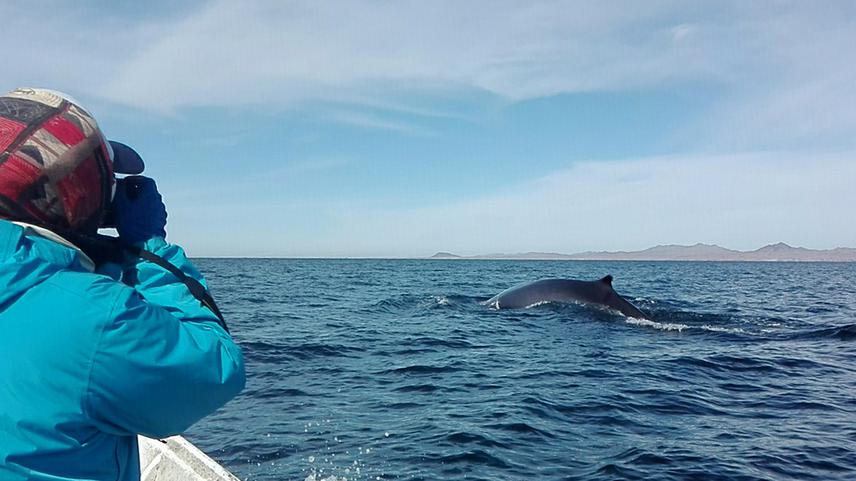Omar García-Castañeda
Other projects
17 Nov 2021
Development of a Proposal to Guide the Sustainability of the Whale Watching Industry in Baja California Sur, Mexico
14 Jan 2025
Foundations for Sustainable Tourism and Humpback Whale Conservation Based on Citizen Science
The Biological-Fishing Corridor Puerto Peñasco to Puerto Lobos is known to be an area rich in species. However, there is no information related to the distribution of cetaceans. Our objective is to consolidate the proposal of the biological-fishing corridor with the ecological records of Cetaceans. For this, 11-day monitoring will be carried, in warm seasons and 11 days in the cold temperate. The linear transect method will be used. Also, area fishermen will be trained to assist cetacean monitoring in the future and will be given information on whale watching as a working alternative. The data will be analyzed and a list of the species of cetaceans present in the region will be obtained, as well as maps of spatial distribution, temporal and habitat use.

Team of researchers taking a photograph of the back of the fin whale in the area of Puerto Peñasco, Sonora. © B.M. Omar Garcia Castañeda.
The Biological-Fishing Corridor Puerto Peñasco to Puerto Lobos is located in the northern region of the Sonoran coast in México, is known to be an area rich in species. The community in conjunction with the Intercultural Center for Deserts and Oceans (CEDO, in spanish) is promoting the biological corridor in an attempt to harness resources in a sustainable manner and at the same time, to favour the marine ecosystem.
Systematic records of marine mammals in the area are scarce, so generating the baseline on the diversity and distribution of this group in the region is essential to understand the ecological dynamics of the area. In addition if we consider cetaceans as sentinels of the marine environment (area productivity, pollution levels, etc.), their study is necessary, not only for the group but also for the ecosystem in general.
Researchers have indicated that the Upper Gulf of California is an important area for the distribution of species such as the fin whale, bryde's whale and some migrants such as blue whale, This not counting the less constant sightings of other cetaceans.
In this project, we will carry out monitoring that will be directed by trained personnel from the Marine Mammal Research Program (PRIMMA) of the Universidad Autónoma de Baja California Sur (UABCS) in Mexico, and will be assisted by CEDO logistical support. The linear transect method will be used and cetaceans will be sought by the naked eye, photos of the species will be taken for their identification, behavioural data and oceanographic conditions will be recorded. The data will be analysed and we will get a list of the species of cetaceans present in the region, as well as maps of spatial distribution and possible interactions with fisheries.
In addition, workshops and surveys will be conducted directed mainly at fishing communities; however CEDO staff will also be trained so that they can continue to monitor cetaceans properly although researchers are not present. The fishermen will be prepared to help to provide information on sightings of cetacean and so to generate a record as complete as possible. In the future we will continue working with the communities to achieve the necessary conservation actions and, if possible, a correct whale watching.